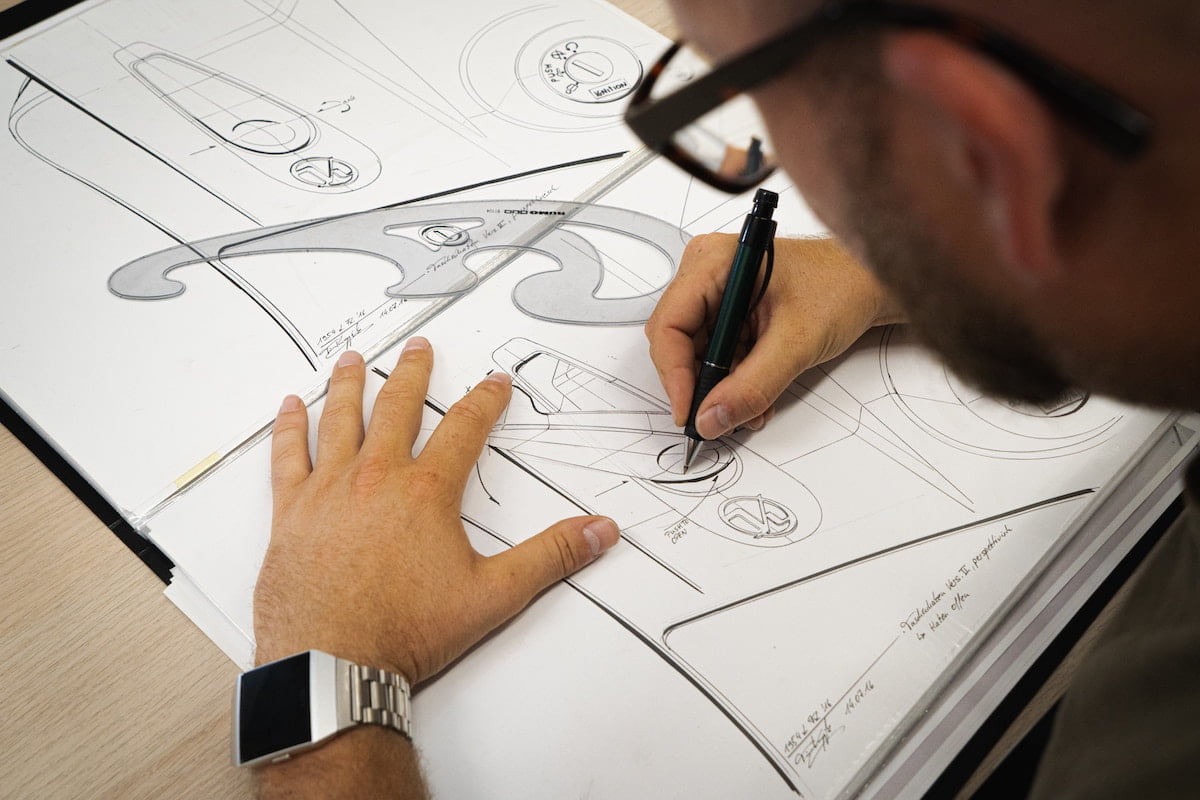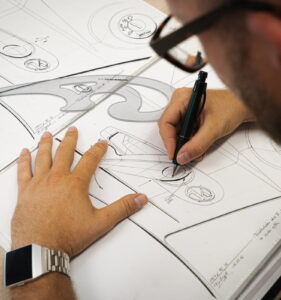New product development is a crucial process that helps businesses to stay ahead of the competition and meet the ever-changing demands of customers. It involves the entire process of bringing a new product or service to market, from idea generation to launch. Here’s a detailed guide on the key steps involved in new product development.
The first step in new product development is ideation, where businesses brainstorm potential ideas for new products or services. This could involve identifying gaps in the market, conducting customer research, or exploring emerging trends. Once an idea is selected, the next step is to conduct a feasibility study to assess whether it’s viable and profitable.
The next step is to create a product concept, which involves defining the product’s features, benefits, and unique selling proposition (USP). This is followed by developing a prototype or minimum viable product (MVP) to test the concept with a small group of customers and gather feedback.
Once the product concept has been validated, the next step is to develop the product and design its packaging, branding, and marketing strategy. This requires collaboration between different departments, such as research and development, design, and marketing.
After the product has been developed, it’s time to test it with a larger group of customers to ensure it meets their needs and expectations. This involves conducting focus groups, surveys, and beta testing to gather feedback and make any necessary improvements.
Finally, the product is ready to launch, which involves creating a marketing campaign to build buzz and generate interest. This could involve advertising, social media marketing, influencer partnerships, and PR campaigns. The launch phase is critical, as it sets the tone for the product’s success in the market.
Ideation
Ideation is the first step in the process of new product development, where businesses generate potential ideas for new products or services. This phase involves identifying gaps in the market, exploring emerging trends, conducting customer research, and brainstorming new ideas. It’s important to involve stakeholders from different departments, such as marketing, research and development, and design, to ensure a diverse range of perspectives.
During ideation, it’s essential to keep the focus on customer needs and pain points. The goal is to identify opportunities to solve problems or create new solutions that meet customer demands. The process can involve a range of techniques, such as mind mapping, brainstorming, and SWOT analysis, to generate new ideas and assess their viability.
One common mistake businesses make during ideation is to focus on solutions rather than problems. It’s essential to start with a problem or need and then work towards a solution that meets the identified problem. This approach helps to ensure that the product is aligned with customer needs and will be successful in the market.
Another critical aspect of ideation is to consider the competitive landscape. This involves researching competitors and identifying their strengths and weaknesses. This information can help businesses to create products that differentiate from the competition and provide a unique selling proposition (USP).
Concept creation
Concept creation is the next step in the process of new product development, where businesses develop a product concept that defines the product’s features, benefits, and unique selling proposition (USP). This phase builds upon the ideas generated during the ideation phase and helps to refine the product’s value proposition.
The first step in concept creation is to define the product’s target market. This involves understanding the needs, preferences, and behavior of the target audience, such as demographics, psychographics, and purchase behaviors. This information helps businesses to tailor their product concept to the needs of their target audience.
The next step is to develop a product concept statement that defines the product’s unique selling proposition (USP), features, and benefits. This statement should be clear, concise, and focused on customer needs. It should highlight the problem the product solves and the benefits it provides to the customer.
Once the product concept statement is defined, the next step is to create a visual representation of the product concept. This could involve creating sketches, 3D models, or digital renderings that bring the product to life. This helps stakeholders to visualize the product and provide feedback on its design and functionality.
During concept creation, it’s important to consider the feasibility and profitability of the product concept. This involves conducting a feasibility study that assesses the technical, financial, and operational aspects of the product. This helps to ensure that the product is viable and profitable before investing resources into its development.
Go to Market strategy
The Go-to-Market (GTM) strategy is the final step in the process of new product development, where businesses create a plan to launch and promote their product in the market. This phase involves a coordinated effort between different departments, such as marketing, sales, and operations, to ensure a successful product launch.
The first step in developing a GTM strategy is to define the target market and positioning. This involves identifying the ideal customer for the product, understanding their needs and preferences, and creating a message that resonates with them. The positioning should highlight the unique selling proposition (USP) of the product and differentiate it from the competition.
The next step is to develop a marketing plan that outlines the tactics and channels to reach the target market. This could involve advertising, social media marketing, email marketing, content marketing, and influencer partnerships. The marketing plan should be aligned with the positioning and messaging of the product, and should be focused on generating interest and awareness.
Another critical aspect of the GTM strategy is to develop a sales plan that outlines the channels and resources to sell the product. This could involve direct sales, partnerships with distributors or retailers, or e-commerce platforms. The sales plan should be aligned with the marketing plan and should be focused on generating revenue and profitability.
During the GTM strategy, it’s essential to consider the operational aspects of the product launch. This could involve supply chain management, inventory management, and customer support. The goal is to ensure that the product launch is seamless and that customers have a positive experience with the product.
Finally, it’s important to measure the success of the GTM strategy and make any necessary adjustments. This could involve tracking metrics such as sales revenue, customer acquisition costs, and customer satisfaction. This information helps businesses to evaluate the effectiveness of their GTM strategy and make improvements for future product launches.
Risks of New product development
New product development is a complex and challenging process that involves many risks. These risks can have significant consequences for businesses, including financial losses, reputational damage, and loss of market share. Here are some of the risks associated with new product development:
- Technical Risks: Developing a new product requires technical expertise and resources. Technical risks include design flaws, functionality issues, manufacturing difficulties, and supply chain disruptions. These risks can result in delays, increased costs, and a product that does not meet customer needs.
- Market Risks: There is always uncertainty about how a new product will perform in the market. Market risks include changes in customer preferences, increased competition, and economic downturns. These risks can result in low demand, decreased sales, and the failure of the product to generate revenue.
- Financial Risks: New product development requires a significant investment of time and resources. Financial risks include high development costs, low return on investment, and inability to secure funding. These risks can result in financial losses and put the business at risk.
- Legal Risks: Developing a new product involves navigating complex legal and regulatory requirements. Legal risks include intellectual property infringement, product liability claims, and non-compliance with regulations. These risks can result in lawsuits, fines, and reputational damage.
- Human Risks: New product development requires a team of experts from different departments to work together. Human risks include poor communication, lack of collaboration, and turnover of key personnel. These risks can result in delays, miscommunication, and a product that does not meet customer needs.
By identifying and assessing these risks, businesses can take steps to mitigate them and increase the chances of a successful product launch. The key is to remain customer-centric throughout the process, remain agile and adaptable, and collaborate closely between different departments to address risks and achieve the ultimate goal of delivering value and innovation to customers.
Alternative approaches to New product development
While traditional new product development approaches involve a linear process that progresses from ideation to launch, there are alternative approaches that businesses can use to develop new products. Here are some alternative approaches to new product development:
- Design Thinking: Design thinking is a human-centered approach to new product development that involves empathizing with customers, defining the problem, ideating solutions, prototyping, and testing. This approach prioritizes understanding customer needs and pain points and using creativity to generate innovative solutions.
- Agile Development: Agile development is a flexible approach to new product development that involves iterative cycles of development and testing. This approach allows businesses to respond quickly to changes in the market and customer needs, while also reducing the risks associated with developing a new product.
- Lean Startup: The Lean Startup approach is a method for developing new products that involves testing assumptions, validating the product concept, and building a minimum viable product (MVP) to test with customers. This approach emphasizes rapid experimentation and learning to build a successful product.
- Open Innovation: Open innovation involves collaborating with external partners, such as customers, suppliers, and other businesses, to generate new ideas and solutions. This approach leverages the collective knowledge and resources of different stakeholders to create successful products.
- Co-Creation: Co-creation involves collaborating with customers and other stakeholders to develop new products. This approach prioritizes understanding customer needs and involving them in the development process to create products that meet their needs.
By choosing an approach that aligns with their goals, resources, and capabilities, businesses can increase their chances of success and create products that differentiate from the competition.


